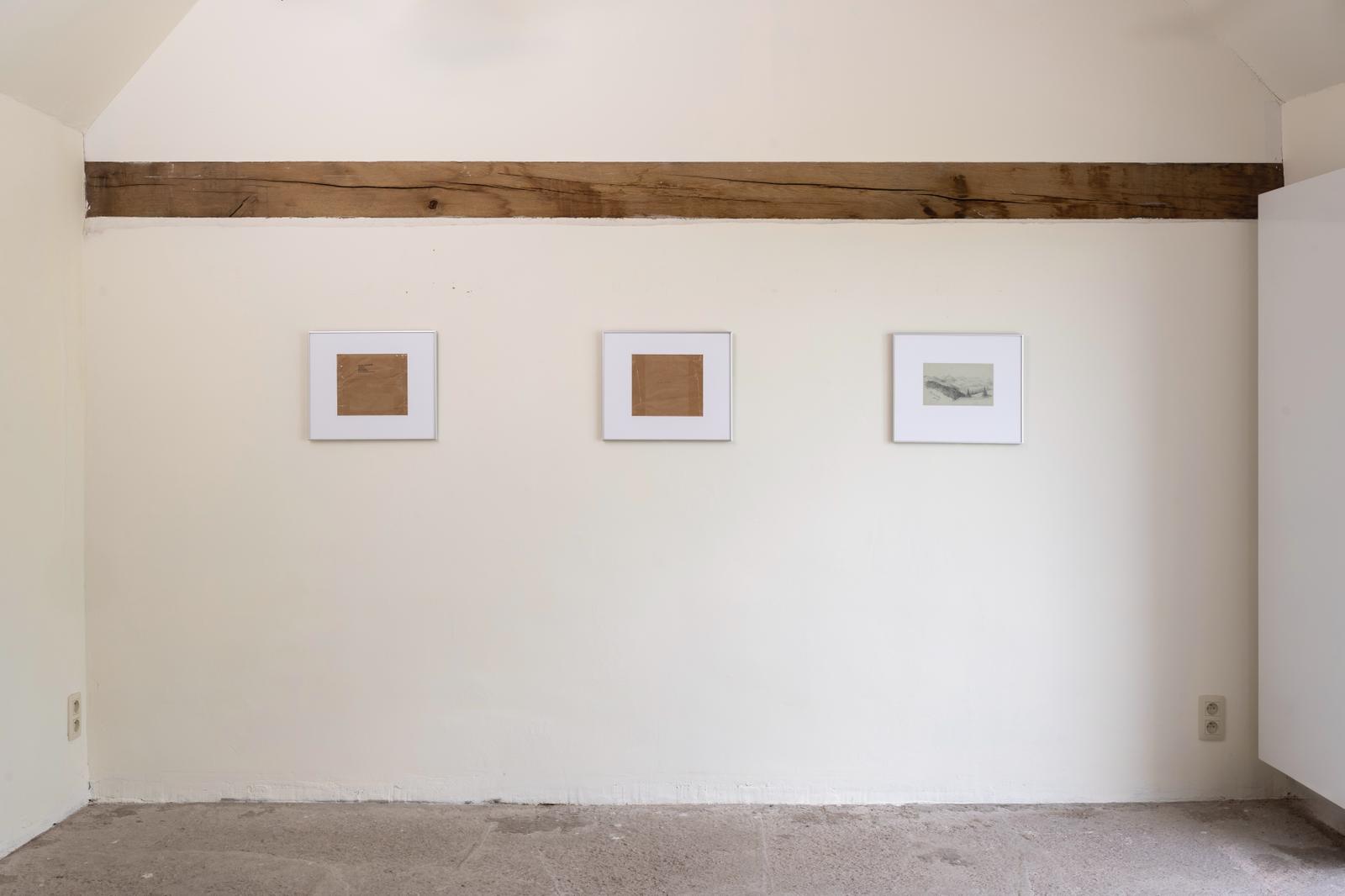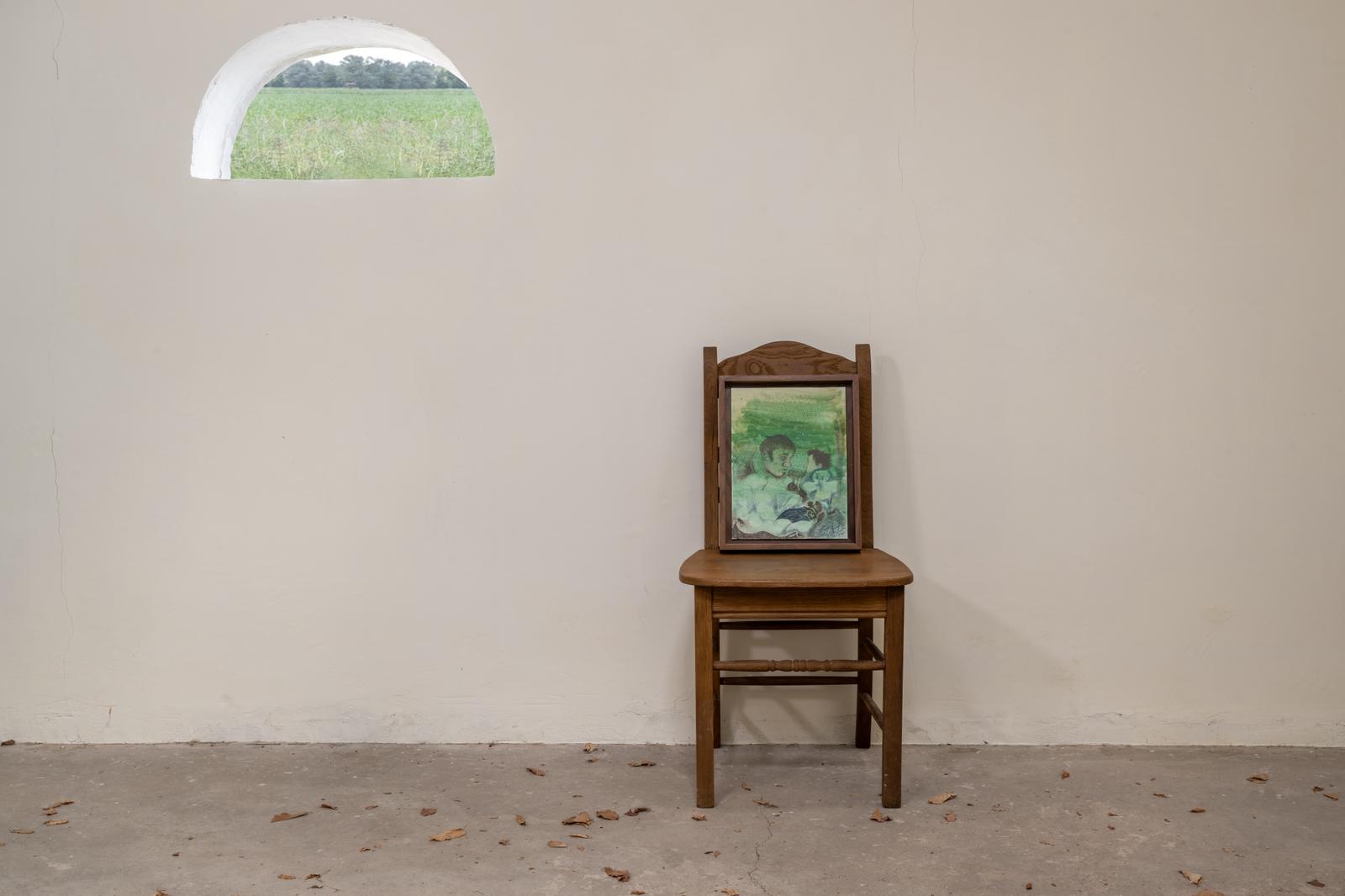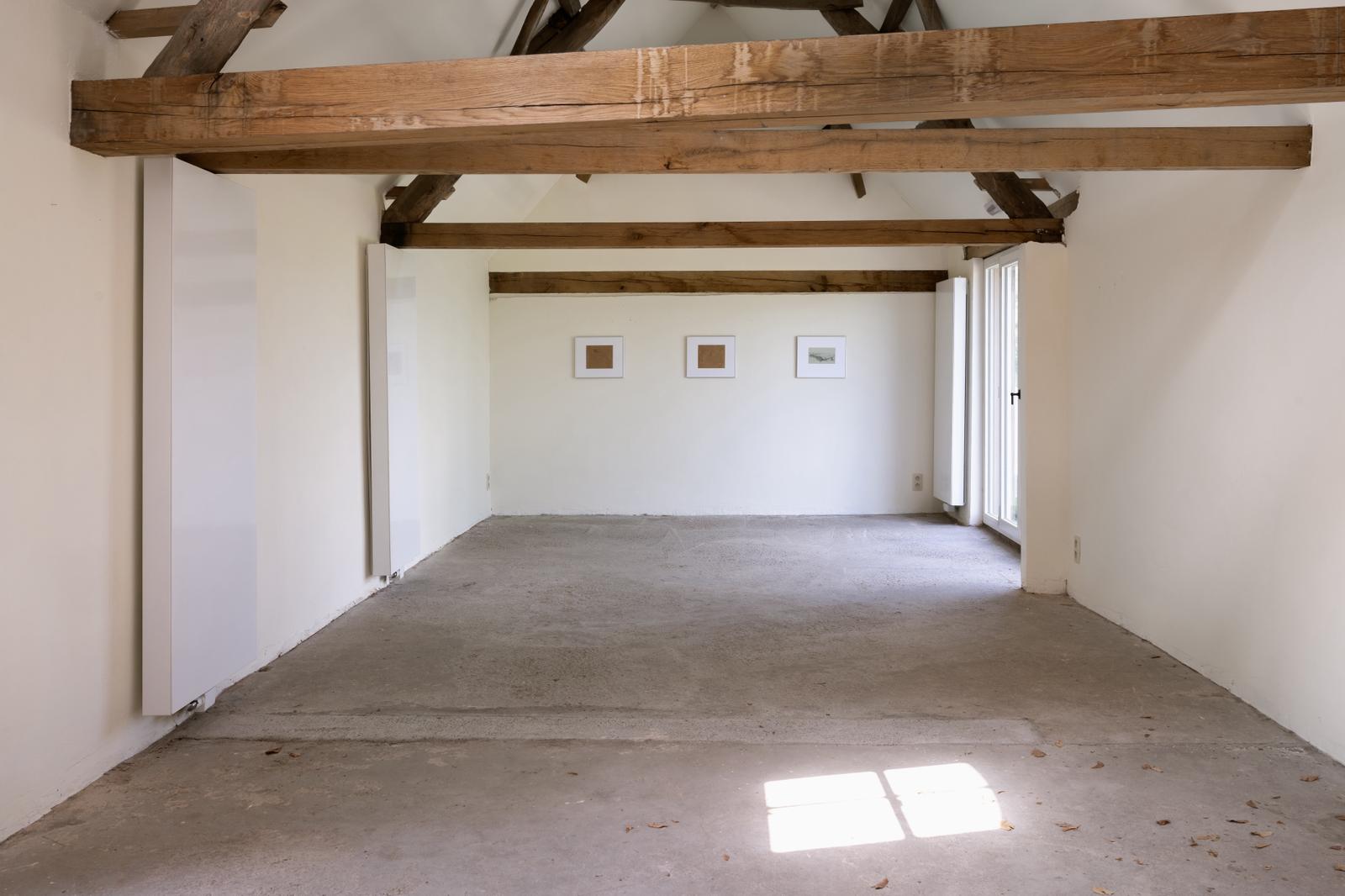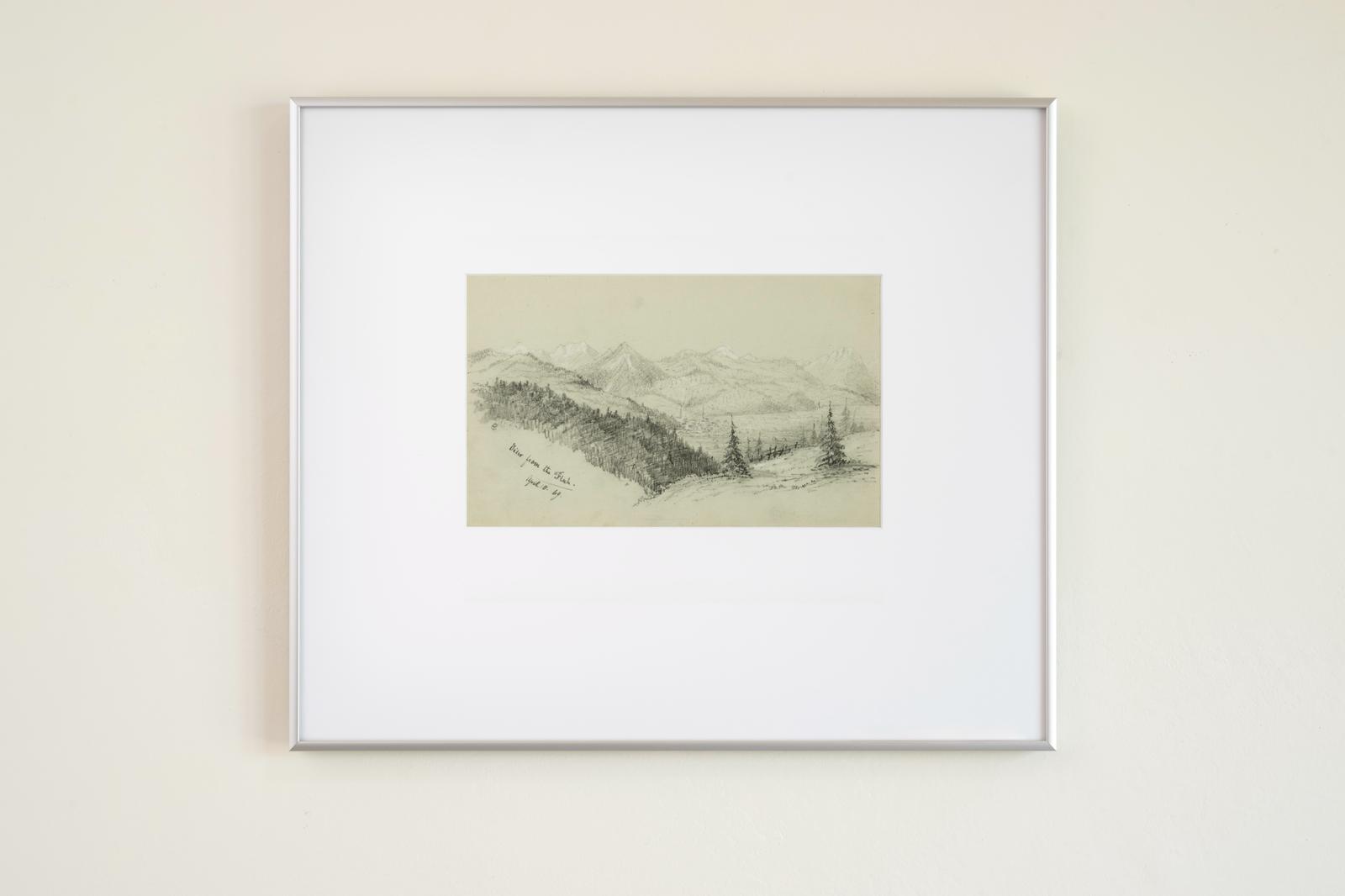Jack Roberts, Francesco De Bernardi
‘Star drawings’
JIR SANDEL and In Den Bouw
May 31– June 22, 2025
I.
Though it feels like a relic of another time, celestial navigation was relied on by the US Air Force until as recently as 1997 – continuing a school of thought that stretches back to the ancient Polynesians. Long before modern navigation, they read the stars – lodestars, as they were known – to find their way at sea for thousands of years. They also used other environmental cues: the cadence of sea swells, the position of cloud formations, and the movement of birds, to work out where they were, where they had been, and where they were heading. Many other creatures: Harbor Seals, migratory songbirds, and Dung beetles, similarly orient themselves using celestial cues in embodied instincts formed over millennia, habits older than memory.
Today, complex tools such as sextants, astrolabes, and navigational almanacs, all used to measure latitudes and longitudes, have been replaced by the clean precision of GPS, which triangulates distance between satellites using invisible signals from above. And yet sometimes, looking up at the night sky, it is easy to mistake a satellite for a star.
II.
If, in the late 1800s, there was a man who undertook a journey from Cape Town – then the political centre of the Cape Colony – to Kimberley, a booming diamond mining town, the journey would have taken him several weeks. He would have had to pass through a vast semi-desert known as the Karoo, a flat expanse girdled by mountainous ridges. He would have passed through an area where, many years later, the town of Sutherland would become known for its telescopes, leveraging the Karoo’s unique geographical position as an extraordinarily flat landscape with exceptionally clear skies. At that time, no observatory would have yet been built there, and the sparse population would have meant very little light pollution. Under such dark skies, the stars would have appeared intensely bright. Our traveller might have been inclined to sketch them.
III.
First Light is a term used by astronomers to describe the successful first sighting of distant stars through their instruments. Uncalibrated, the telescopic images are often grainy, fuzzy, and out-of-focus: white pin-pricks peppering darkness. But the tangible discernment of lightwaves from several thousand lightyears away is significant. The moment is a phatic one; one of wordless connection across unfathomable space and time; an instance of inexact yet unmistakable contact.
In the scientific community, the moment of First Light is immensely anticipated, like the sun over the horizon. Small white asterisks, they seem to say: more elsewhere.
In situ
![]()
![]()
![]()
![]()
Jack Roberts, Francesco De Bernardi
‘Star drawings’
JIR SANDEL and In Den Bouw
May 31– June 22, 2025
I.
Though it feels like a relic of another time, celestial navigation was relied on by the US Air Force until as recently as 1997 – continuing a school of thought that stretches back to the ancient Polynesians. Long before modern navigation, they read the stars – lodestars, as they were known – to find their way at sea for thousands of years. They also used other environmental cues: the cadence of sea swells, the position of cloud formations, and the movement of birds, to work out where they were, where they had been, and where they were heading. Many other creatures: Harbor Seals, migratory songbirds, and Dung beetles, similarly orient themselves using celestial cues in embodied instincts formed over millennia, habits older than memory.
Today, complex tools such as sextants, astrolabes, and navigational almanacs, all used to measure latitudes and longitudes, have been replaced by the clean precision of GPS, which triangulates distance between satellites using invisible signals from above. And yet sometimes, looking up at the night sky, it is easy to mistake a satellite for a star.
II.
If, in the late 1800s, there was a man who undertook a journey from Cape Town – then the political centre of the Cape Colony – to Kimberley, a booming diamond mining town, the journey would have taken him several weeks. He would have had to pass through a vast semi-desert known as the Karoo, a flat expanse girdled by mountainous ridges. He would have passed through an area where, many years later, the town of Sutherland would become known for its telescopes, leveraging the Karoo’s unique geographical position as an extraordinarily flat landscape with exceptionally clear skies. At that time, no observatory would have yet been built there, and the sparse population would have meant very little light pollution. Under such dark skies, the stars would have appeared intensely bright. Our traveller might have been inclined to sketch them.
III.
First Light is a term used by astronomers to describe the successful first sighting of distant stars through their instruments. Uncalibrated, the telescopic images are often grainy, fuzzy, and out-of-focus: white pin-pricks peppering darkness. But the tangible discernment of lightwaves from several thousand lightyears away is significant. The moment is a phatic one; one of wordless connection across unfathomable space and time; an instance of inexact yet unmistakable contact.
In the scientific community, the moment of First Light is immensely anticipated, like the sun over the horizon. Small white asterisks, they seem to say: more elsewhere.
In situ
‘Star drawings’
JIR SANDEL and In Den Bouw
May 31– June 22, 2025
I.
Though it feels like a relic of another time, celestial navigation was relied on by the US Air Force until as recently as 1997 – continuing a school of thought that stretches back to the ancient Polynesians. Long before modern navigation, they read the stars – lodestars, as they were known – to find their way at sea for thousands of years. They also used other environmental cues: the cadence of sea swells, the position of cloud formations, and the movement of birds, to work out where they were, where they had been, and where they were heading. Many other creatures: Harbor Seals, migratory songbirds, and Dung beetles, similarly orient themselves using celestial cues in embodied instincts formed over millennia, habits older than memory.
Today, complex tools such as sextants, astrolabes, and navigational almanacs, all used to measure latitudes and longitudes, have been replaced by the clean precision of GPS, which triangulates distance between satellites using invisible signals from above. And yet sometimes, looking up at the night sky, it is easy to mistake a satellite for a star.
II.
If, in the late 1800s, there was a man who undertook a journey from Cape Town – then the political centre of the Cape Colony – to Kimberley, a booming diamond mining town, the journey would have taken him several weeks. He would have had to pass through a vast semi-desert known as the Karoo, a flat expanse girdled by mountainous ridges. He would have passed through an area where, many years later, the town of Sutherland would become known for its telescopes, leveraging the Karoo’s unique geographical position as an extraordinarily flat landscape with exceptionally clear skies. At that time, no observatory would have yet been built there, and the sparse population would have meant very little light pollution. Under such dark skies, the stars would have appeared intensely bright. Our traveller might have been inclined to sketch them.
III.
First Light is a term used by astronomers to describe the successful first sighting of distant stars through their instruments. Uncalibrated, the telescopic images are often grainy, fuzzy, and out-of-focus: white pin-pricks peppering darkness. But the tangible discernment of lightwaves from several thousand lightyears away is significant. The moment is a phatic one; one of wordless connection across unfathomable space and time; an instance of inexact yet unmistakable contact.
In the scientific community, the moment of First Light is immensely anticipated, like the sun over the horizon. Small white asterisks, they seem to say: more elsewhere.
In situ



